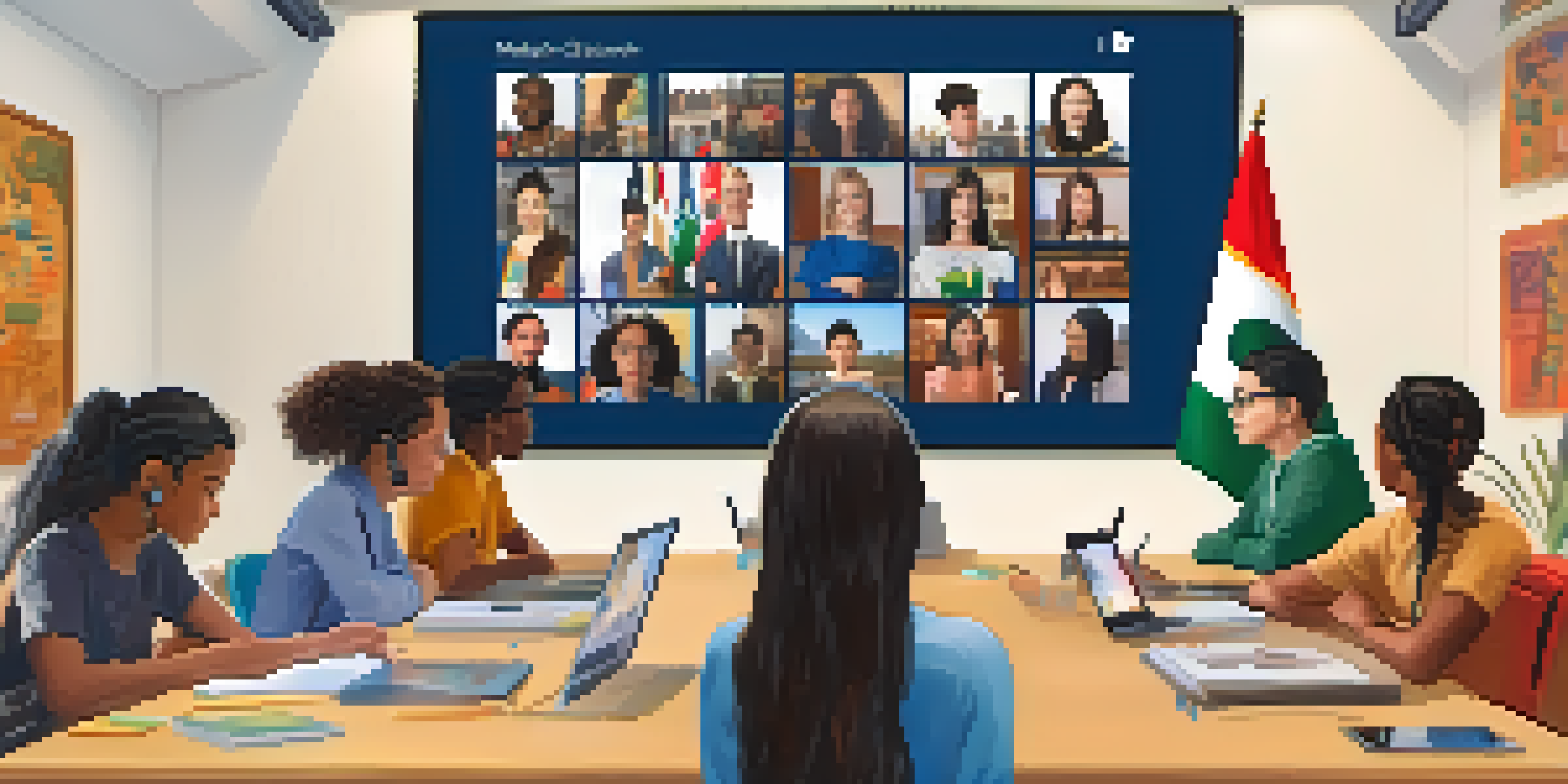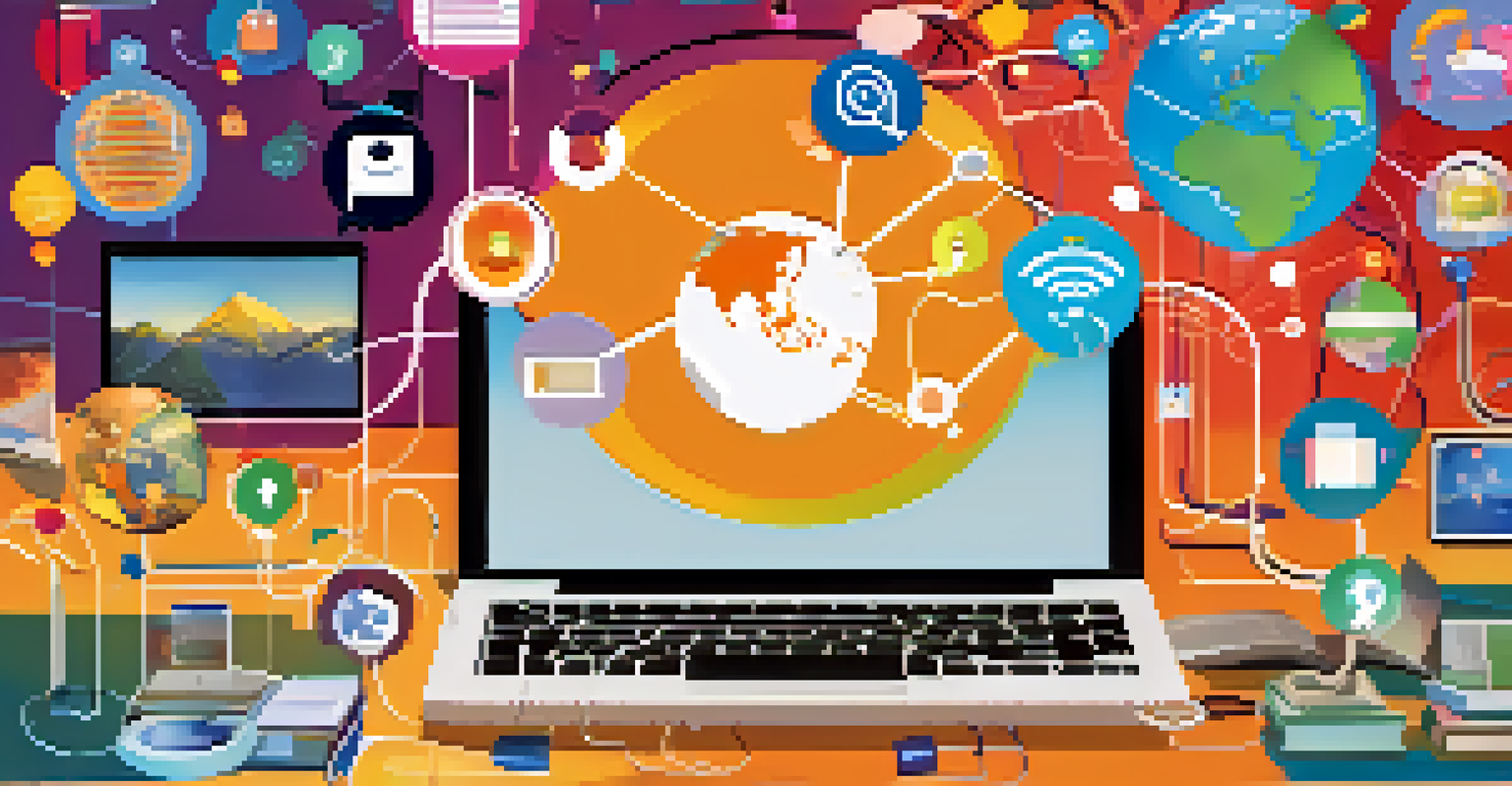Creating Global Learning Opportunities Through Remote Education

The Rise of Remote Education in a Global Context
Remote education has exploded in popularity, fueled by technological advancements and the necessity brought on by recent global events. This shift has opened doors for learners worldwide, allowing them to access quality education beyond geographical limitations. Imagine a student in a rural village attending lectures from a prestigious university halfway across the globe—this is now a reality.
The great thing about a digital education is that it is available to anyone with an internet connection, breaking down barriers that have long existed in traditional education.
The COVID-19 pandemic accelerated this trend, highlighting the importance of flexible learning. Educational institutions quickly adapted to online platforms, making it easier for students to participate in classes from anywhere. This adaptability showcases the potential for remote education to reach underserved communities and provide them with resources they previously lacked.
Moreover, as we embrace this new landscape, the importance of digital literacy becomes evident. Just as we learn to navigate physical classrooms, students must also develop skills to thrive in virtual environments. This evolution in education not only offers greater access but also prepares learners for a digital future.
Breaking Geographic Barriers to Learning
One of the most significant advantages of remote education is its ability to break down geographic barriers. Students from diverse backgrounds can now learn together, fostering a global classroom experience. Think of it as a melting pot of ideas where different cultures and perspectives converge, enriching the learning process.

This inclusivity is crucial in building a more equitable education system. Students who might have been sidelined due to location now have access to the same resources as their urban counterparts. By leveling the playing field, remote education democratizes learning, allowing talent and ambition to shine regardless of where one lives.
Remote Education Breaks Barriers
Remote education removes geographical limitations, providing equal access to quality learning for students worldwide.
Furthermore, this global access not only benefits students but also educators. Teachers can share their expertise with a wider audience, thus enhancing the quality of education everywhere. This cross-pollination of knowledge creates a vibrant learning ecosystem, driving innovation and collaboration.
Enhancing Cultural Exchange Through Online Learning
Remote education paves the way for rich cultural exchanges that traditional classrooms might struggle to offer. Students can connect with peers from around the world, gaining insights into different customs and perspectives. It's like traveling the globe without leaving your home—fostering understanding and empathy.
Education is the most powerful weapon which you can use to change the world.
For instance, a student in Japan can collaborate on a project with a classmate in Brazil, sharing their unique viewpoints and experiences. These interactions not only enhance academic learning but also cultivate global citizenship among young learners. They learn to appreciate diversity, which is essential in our interconnected world.
Moreover, cultural exchange through remote education can spark creativity and innovation. Exposure to different ideas can lead to fresh solutions for complex problems, driving progress in various fields. Ultimately, this exchange nurtures a generation that values collaboration across borders.
Flexible Learning Models for Diverse Needs
Flexibility is one of the hallmarks of remote education, allowing learners to tailor their educational journeys to their unique needs. With various learning models available, students can choose what suits them best—whether it's synchronous classes or asynchronous modules. This level of customization leads to more engaged and motivated learners.
Additionally, flexible schedules can accommodate those balancing work, family, and education. For example, a working parent can attend evening classes while ensuring their responsibilities are met during the day. This adaptability removes some of the common barriers to education, making it accessible to a broader audience.
Cultural Exchange Enriches Learning
Online learning fosters cultural exchanges, allowing students to collaborate globally and appreciate diverse perspectives.
The variety in learning formats also means that students can explore different subjects at their own pace. This self-directed approach fosters a sense of ownership over their education, encouraging lifelong learning habits. Ultimately, flexibility in remote education empowers learners to thrive on their terms.
Utilizing Technology for Global Collaboration
Technology serves as the backbone of remote education, enabling global collaboration and communication among learners. Platforms like video conferencing tools and collaborative workspaces allow students to connect in real-time, regardless of their physical location. It's akin to having a virtual classroom where ideas flow freely across borders.
These tools not only facilitate group projects but also promote peer-to-peer learning. Students can easily share resources, feedback, and support one another, enhancing the overall educational experience. Picture a brainstorming session where students from different continents contribute their unique insights to solve a common problem.
Moreover, technology is constantly evolving, introducing new ways to engage and inspire learners. Virtual reality (VR) and augmented reality (AR) are beginning to create immersive learning experiences that were once thought impossible. This ongoing innovation keeps remote education fresh and exciting, ready to adapt to the needs of a global student body.
Addressing Challenges in Remote Education
While remote education offers numerous benefits, it isn't without its challenges. Issues such as digital divide, varying levels of access to technology, and the need for self-discipline can hinder some learners' experiences. Addressing these challenges is essential to ensure that remote education remains accessible and effective for everyone.
For instance, not all students have reliable internet access, which can create disparities in learning opportunities. Educational institutions and governments must work together to develop solutions, such as providing resources and infrastructure to underserved communities. By tackling these barriers, we can create a more inclusive educational landscape.
Flexibility Tailors Learning Journeys
Flexible learning models empower students to customize their educational experiences, accommodating their unique needs and schedules.
Additionally, fostering a sense of community in a virtual environment is vital. Educators need to implement strategies that encourage interaction and engagement among students. Creating a supportive online atmosphere can significantly enhance the learning experience, helping students feel connected despite physical distance.
The Future of Global Learning Opportunities
As we look to the future, the potential for remote education to expand global learning opportunities is immense. With advancements in technology and a growing emphasis on inclusivity, we can expect even more innovative approaches to education. The landscape is evolving, and it's exciting to envision what possibilities lie ahead.
Moreover, institutions are beginning to recognize the value of global partnerships in enhancing educational offerings. Collaborating with international organizations can lead to unique programs and shared resources, enriching the learning experience for students everywhere. This trend points to a future where education knows no borders.

Ultimately, the goal is to create a holistic learning environment that prepares students for a dynamic world. By embracing remote education as a tool for global learning, we can empower the next generation to thrive in an interconnected society. The journey has just begun, and the opportunities are limitless.